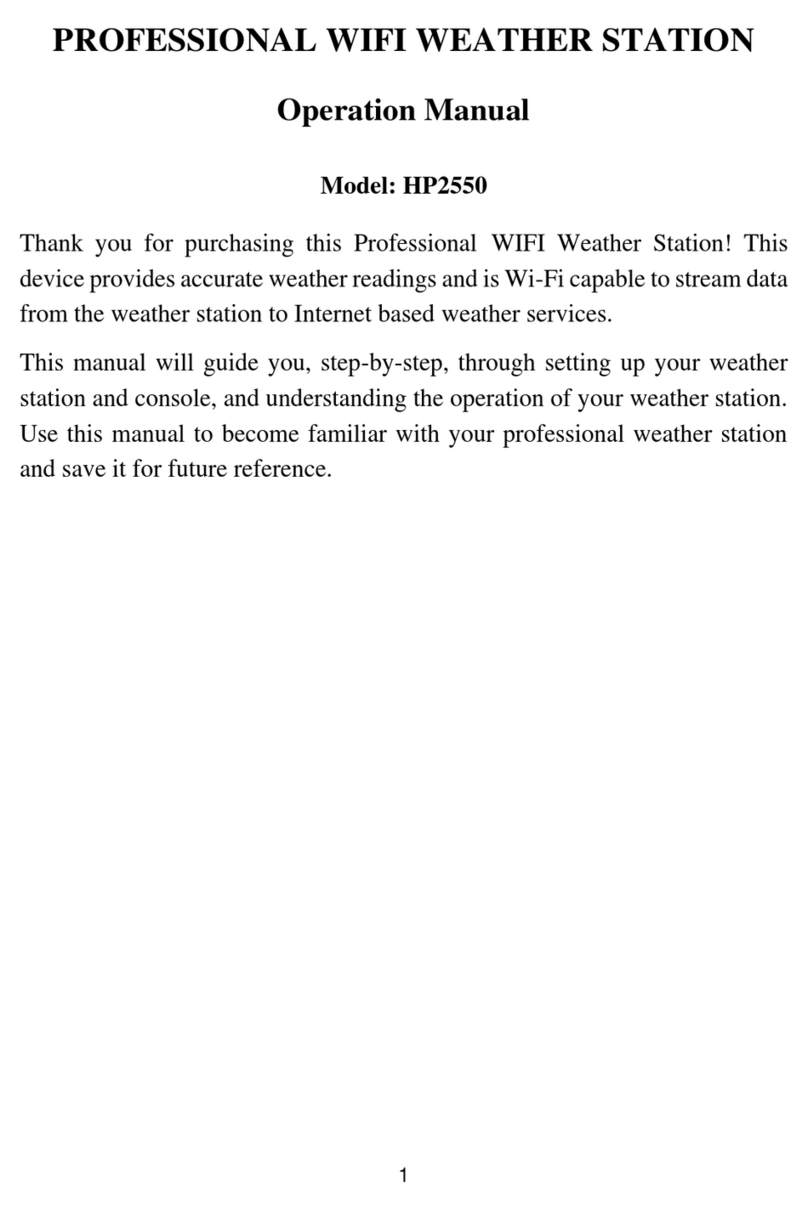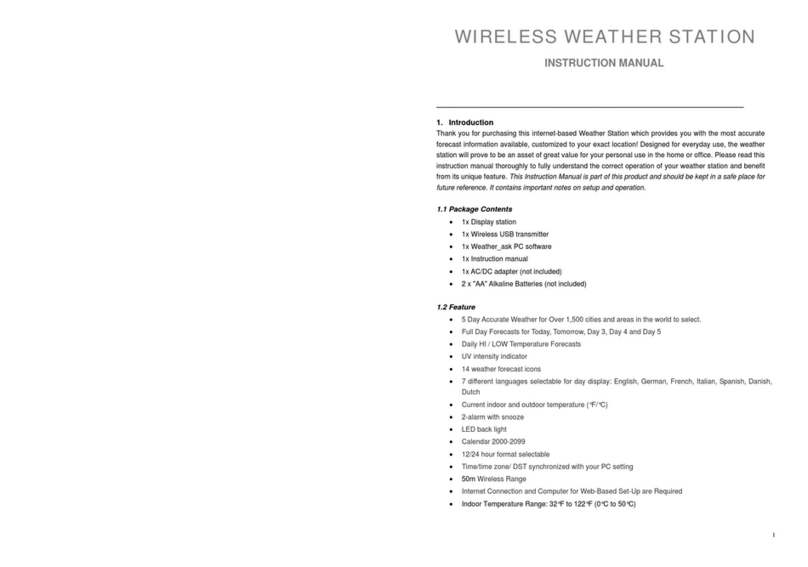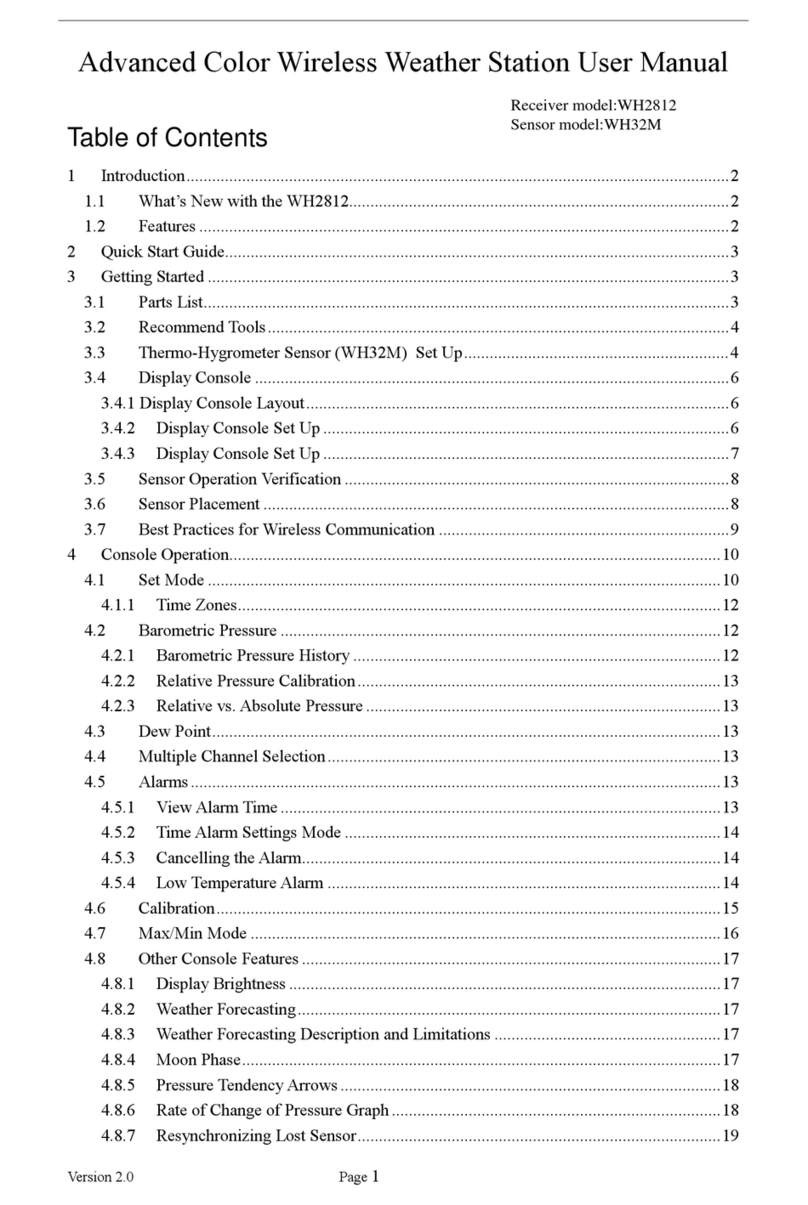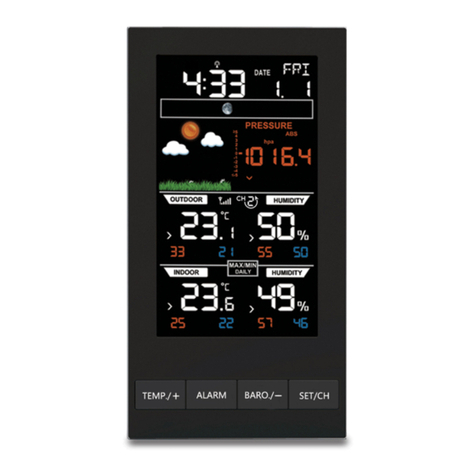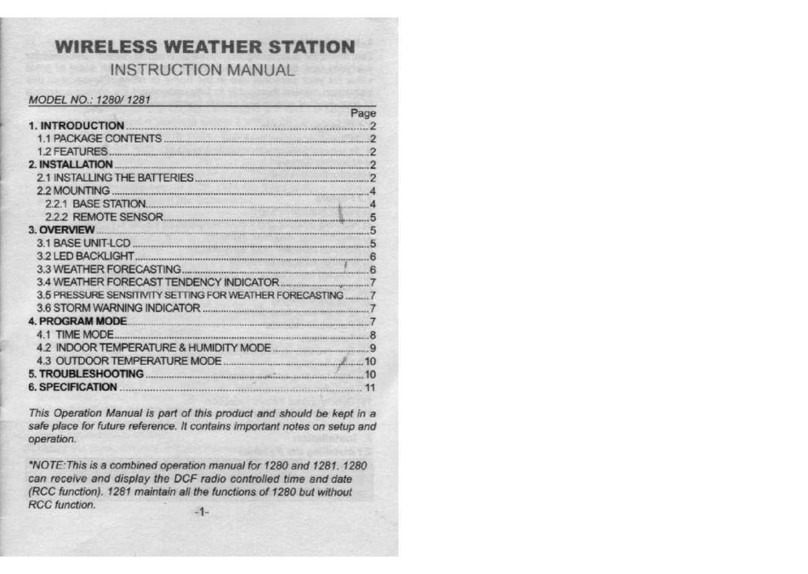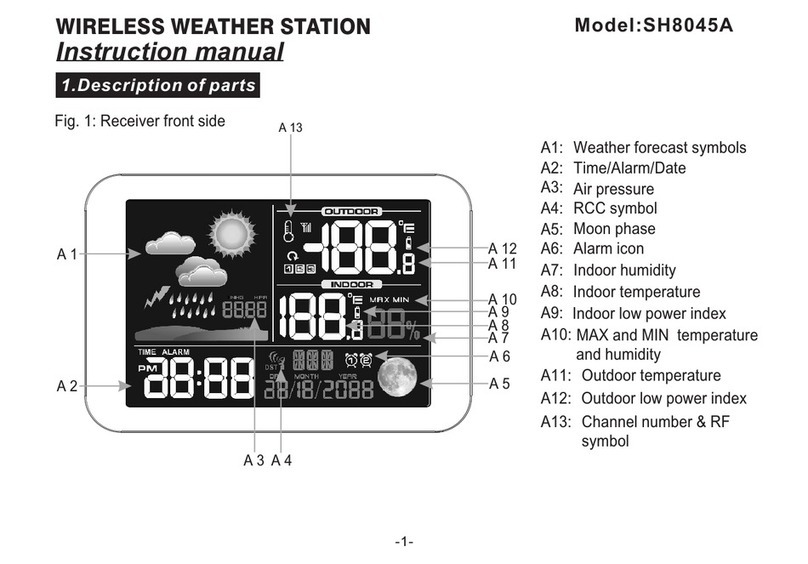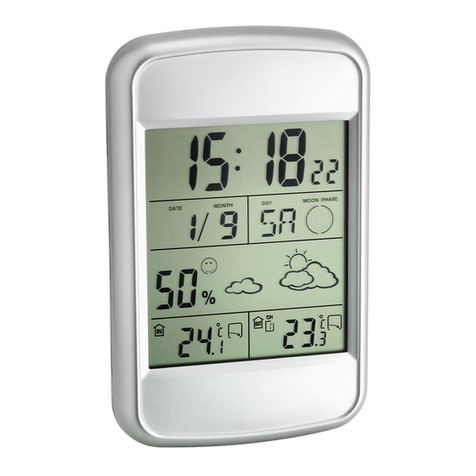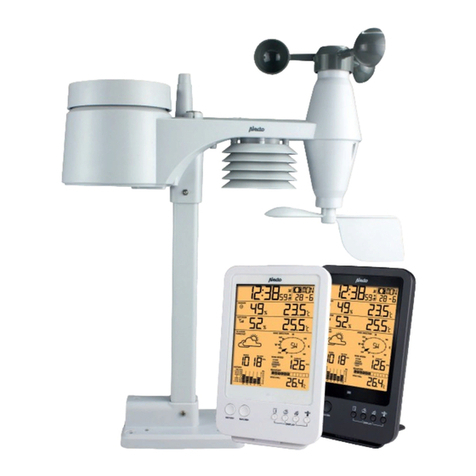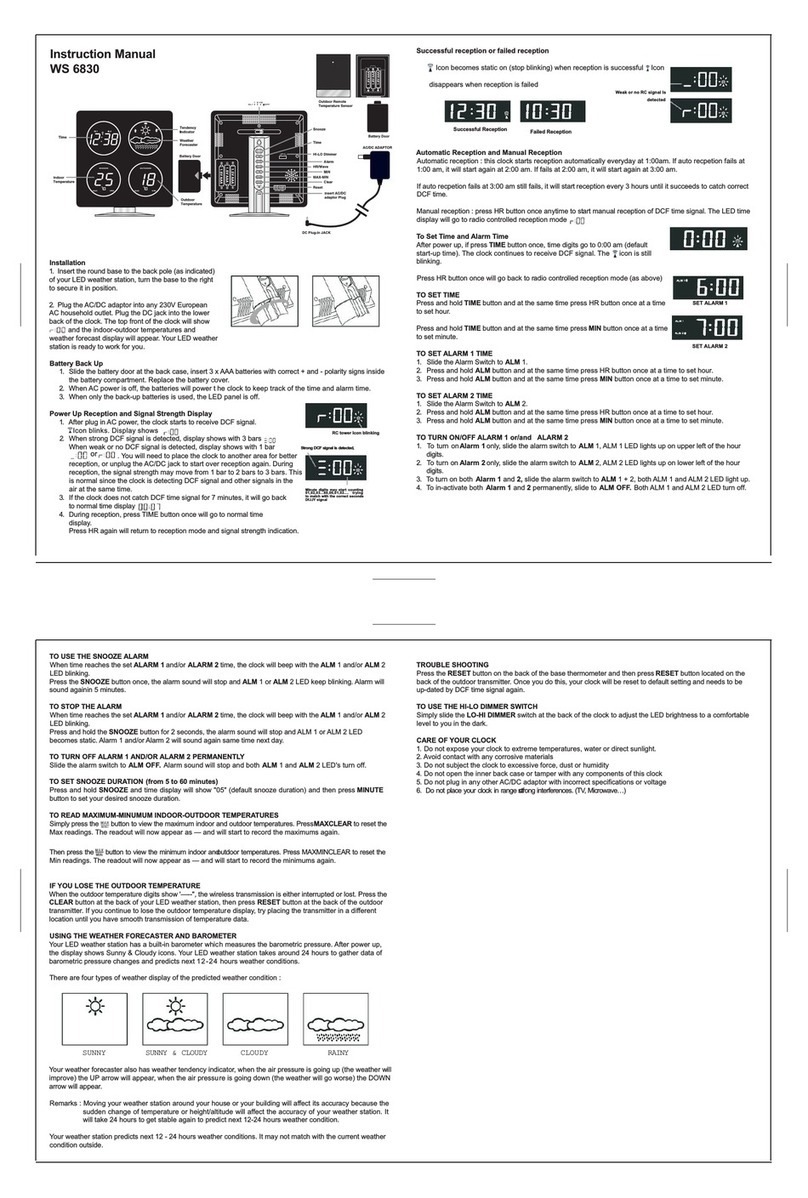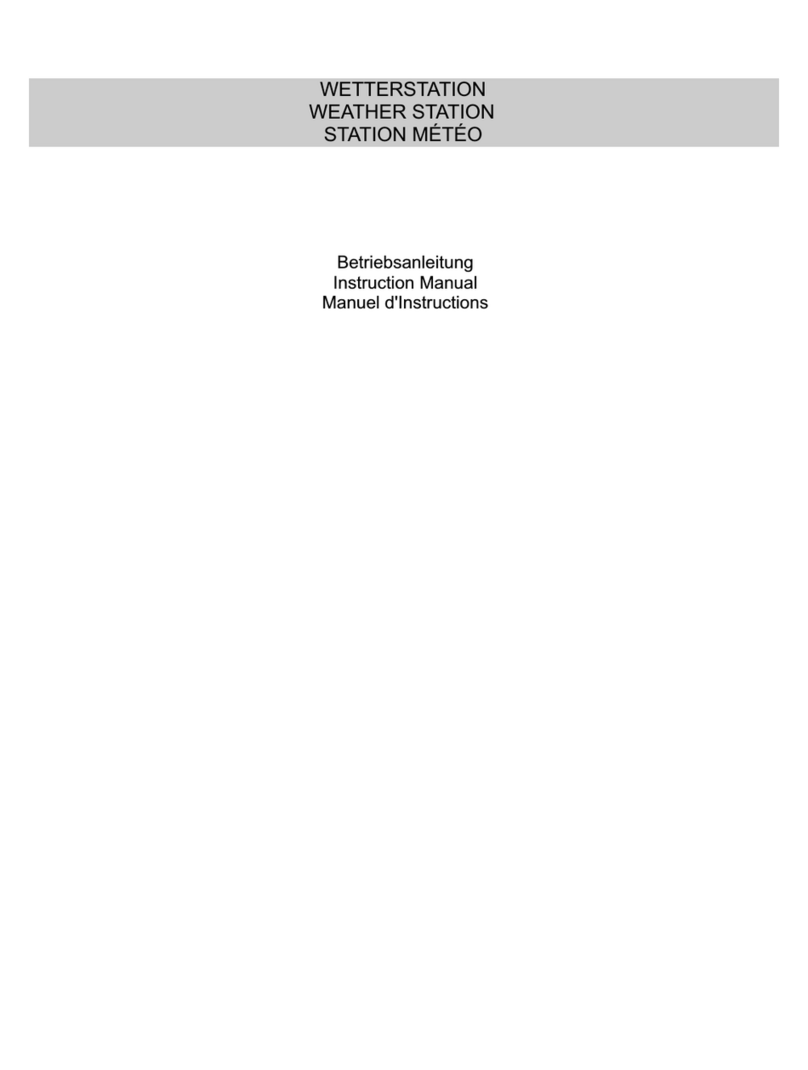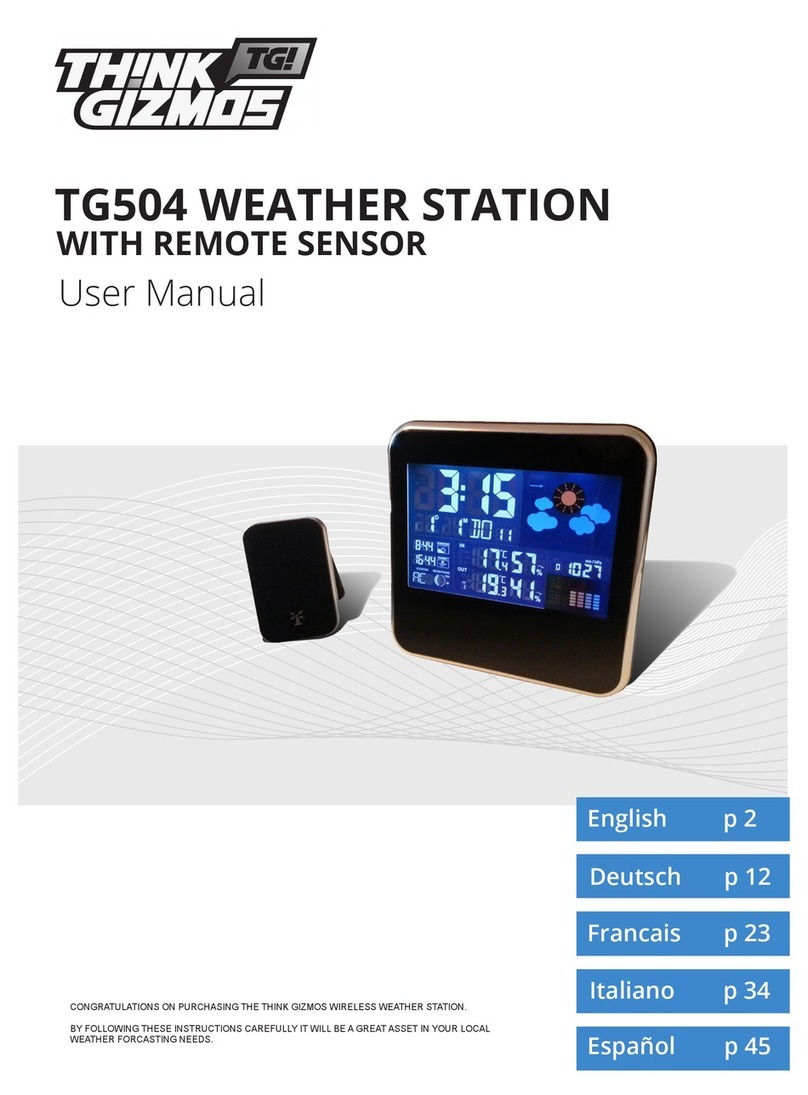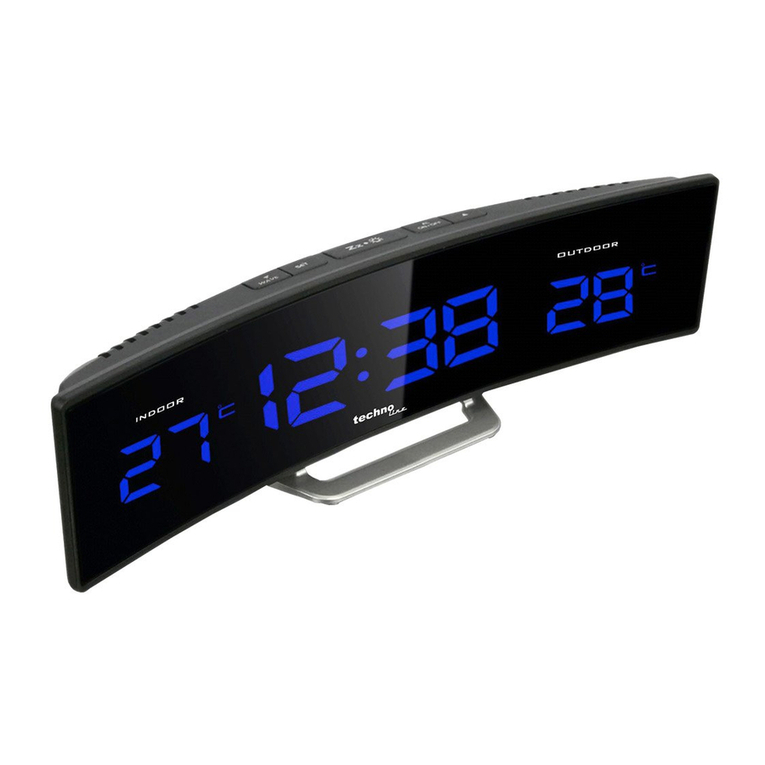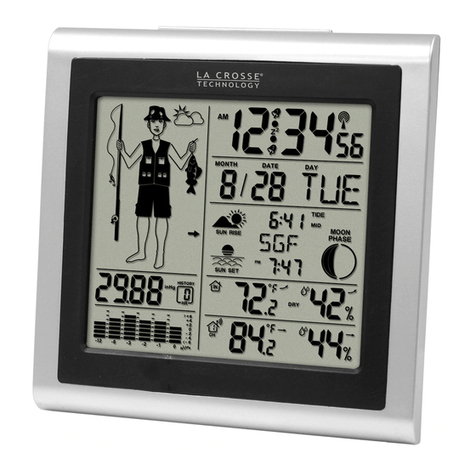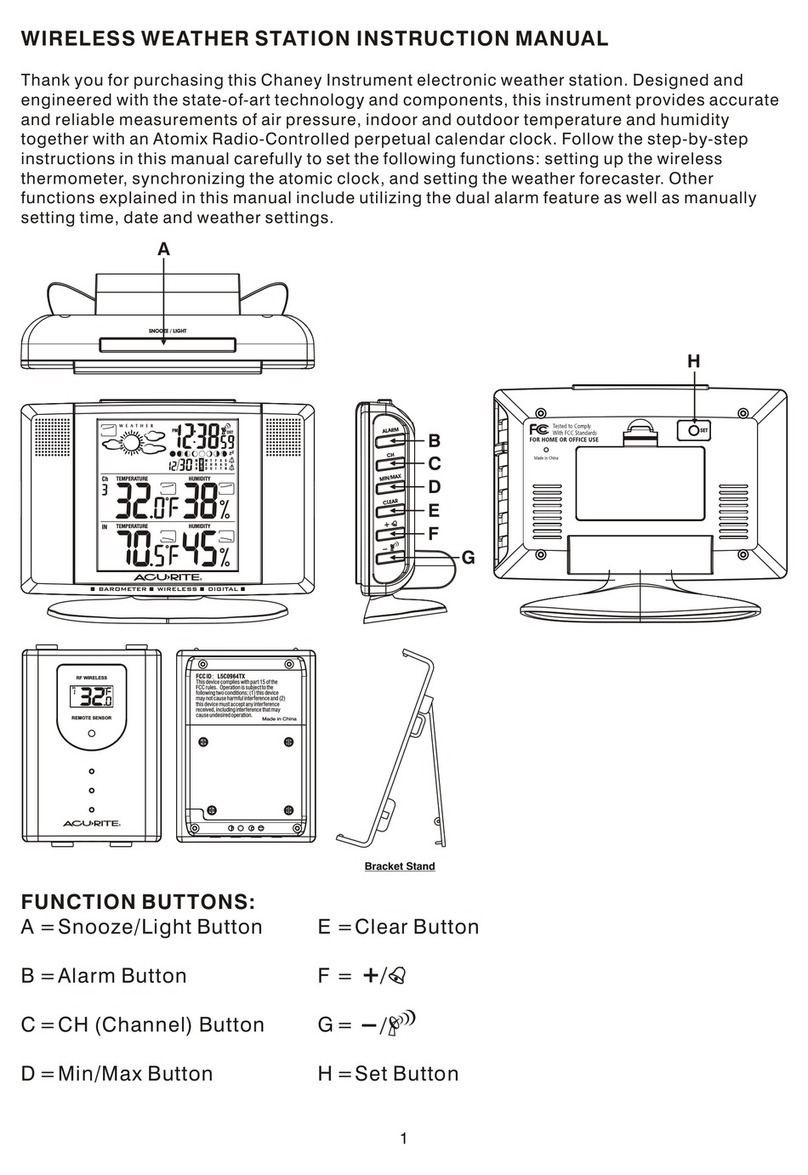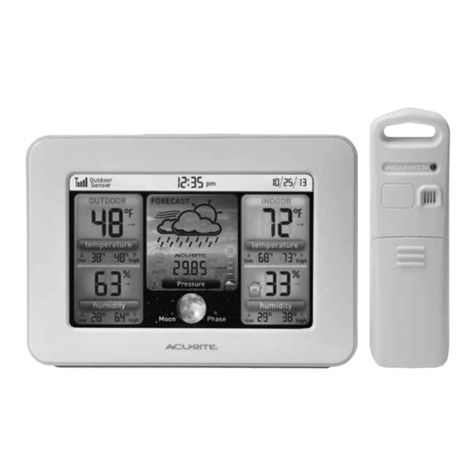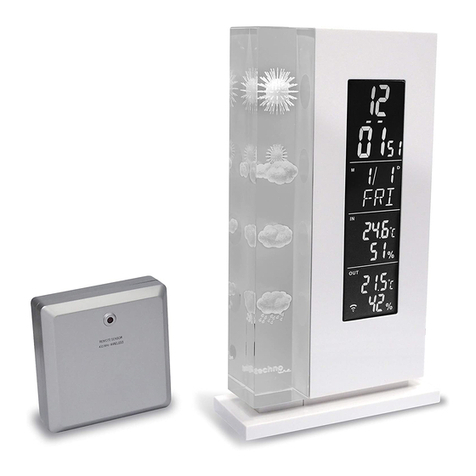Fine offset Air Quality Sensor User manual

Instruction Manual
Air Quality6HnVor
Model: WH

Instruction Manual
1
Contents
1. Introduction...........................................................2
2. Get Started........................................................... 2
2.1 Parts List....................................................2
2.2 Air Quality Sensor Set Up........................3
2.3 Display Console Set Up...........................4
2.3.1 Display Console Layout........................7
3. Wireless Sensor Installation..............................8
4. Console Operation.............................................. 9
4.1 °C/°F...........................................................9
4.2 MAX............................................................9
5. Sensor Resynchronization.................................9
6. Best Practices for Wireless Communication.9
7. Function.............................................................. 10
8. Appendix.............................................................11
9. Specifications.....................................................12
9.1 Wireless Specifications.........................12
9.2 Measurement Specifications................12
9.3 Power Consumption.............................. 12
10. FCC Statement................................................13
11. Warranty Information...................................... 15

Instruction Manual
2
1. Introduction
Thanks for your purchasing of the WH0290
Wireless Air Quality Monitor with Indoor
Temperature and Humidity. To ensure the best
product performance, please read this manual
and retain it for future reference.
2. Get Started
Note: Power up sequence must be performed in
the order shown in this section (insert batteries
in the Air Quality Monitor first, then
Sensor(transmitter).
Attention:
Do not mix old and new batteries
Do not mix Alkaline, Standard, Lithium or
Rechargeable batteries
Ensure batteries are installed correctly with
regard to polarity +/-
2.1 Parts List
One Air Quality Monitor (Receiver)
One Air Quality Sensor(Wireless PM2.5 Sensor)
One USB Cable
One User Manual
Two LSD( low self discharge) Ni-MH
Rechargeable Batteries

Instruction Manual
3
2.2 Air Quality Sensor Set Up
1. Remove the battery door on the base of the
air quality sensor as shown in Figure 1
Figure 1

Instruction Manual
4
1
Solar panel
2
Battery Compartment Cover
3
Red LED Indicator (RF transmission)
4
Blue LED Indicator (charging status)
5
USB Port
6
Battery Compartment
2. Insert two AA battery.
3. After inserting the battery, the remote sensor
LED indicator will light for 4 seconds, and
then flash once per 60 seconds thereafter.
Each time it flashes, the sensor is
transmitting data.
4. Close the battery door.
5. Connect the USB cable to a standard USB
power adapter and charge battery until blue
LED is turned off, indicating batteries are fully
charged.
6. When no sufficient solar radiation is possible,
a fully charged set battery can last for about
20 days( about 500hours), and battery status
monitor on display will reflect the battery
power status. When battery is empty, please
charge sensor again.
2.3 Display Console Set Up
1. Move the remote about 2 to 3m away from

Instruction Manual
5
the display console (if the sensor is too
close, it may not be received by the display
console).
2. Remove the battery door on the back of the
display, as shown in Figure 2. Insert one AA
(alkaline, lithium or rechargeable) battery in
the back of the display console.
Figure 2
1. Integrated Hanging Hole
2. Tabletop Stand
3. °C/°F Button
4. MAX Button
5. Battery Compartment
6. Battery Compartment Cover

Instruction Manual
6
All of the LCD segments will light up for a few
seconds to verify all segments are operating
properly.
Full Display
3. Replace the battery door, and fold out the
desk stand and place the console in the
upright position.
The console will instantly display indoor
temperature and humidity. The PM 2.5
value will update on the display within a few
minutes.
While in the search mode, the reception
search icon flash.
If the remote does not update, please contact
our Customer Service for support.

Instruction Manual
7
2.3.1 Display Console Layout
Figure 3
1. Current PM 2.5 value
2. Air Quality Level
3. 1h MAX PM 2.5 value
4. Indoor Temperature
5. Indoor Humidity
6. 24h MAX PM 2.5 value
7. History MAX PM 2.5 value
8. Outdoor Reception Icon

Instruction Manual
8
3. Wireless Sensor Installation
Outdoor Installation
Use four screws to fix the base of the outdoor
sensor on a flat surface.

Instruction Manual
9
4. Console Operation
Note: The console has two buttons for easy
operation:【°C/°F】button (on the left), and【MAX】
button (on the right).
4.1 °C/°F
Short press 【°C/°F 】button to select the
temperature unit: °C/°F
4.2 MAX
Press the MAX button for 5s to clear the history
max and 24h max PM 2.5 value.
5. Sensor Resynchronization
When the remote sensor lost reception, holding
the °C/°F and MAX button for 5s, will register
new outdoor for 12 minutes.
While in the search mode, the reception search
icon flash.
6. Best Practices for Wireless
Communication
Note: To insure proper communication, place
the remote sensor on a flat surface. Do not lean
or upside down it to avoid any damage.

Instruction Manual
10
Keep the console several feet away from
computer monitors and TVs.
7. Function
1) Indoor temperature and humidity
2) Every 60 second the unit will measure
indoor temperature and humidity.
3) PM 2.5 current and max value for
1h/24h/history.
4) Every 60 second the unit will receive
wireless PM 2.5 sensor.
5) Wireless Signal Strength Indicator
During the synchronization, it will reduce
one signal segment if it have not received
the signal once from the transmitter. It will
increase one signal segment if it has
received the signal once.
Lost the signal once
Received the signal once

Instruction Manual
11
8. Appendix
About the Air Quality Levels
AQI
Air
Pollution
Level
Health Implications
Cautionary Statement
(for PM2.5)
0 - 50
Good
Air quality is considered
satisfactory, and air
pollution poses little or no
risk
None
51 -100
Moderate
Air quality is acceptable;
however, for some
pollutants there may be a
moderate health concern
for a very small number of
people who are unusually
sensitive to air pollution.
Active children and
adults, and people with
respiratory disease,
such as asthma, should
limit prolonged outdoor
exertion.
101-150
Mild
Members of sensitive
groups may experience
health effects. The
general public is not likely
to be affected.
Active children and
adults, and people with
respiratory disease,
such as asthma, should
limit prolonged outdoor
exertion.
151-200
Unhealthy
Everyone may begin to
experience health effects;
members of sensitive
groups may experience
more serious health
effects
Active children and
adults, and people with
respiratory disease,
such as asthma, should
avoid prolonged outdoor
exertion; everyone else,
especially children,
should limit prolonged
outdoor exertion
201-300
Severe
Health warnings of
emergency conditions.
The entire population is
more likely to be affected.
Active children and
adults, and people with
respiratory disease,
such as asthma, should
avoid all outdoor
exertion; everyone else,
especially children,
should limit outdoor
exertion.
300+
Hazardous
Health alert: everyone
may experience more
serious health effects
Everyone should avoid
all outdoor exertion

Instruction Manual
12
9. Specifications
9.1 Wireless Specifications
Line of sight wireless transmission (in
open air): 300feet(100meters)
Frequency: 433.92 MHz
Update Rate: 60 seconds
9.2 Measurement Specifications
The following table provides specifications for
the measured parameters.
9.3 Power Consumption
Base station (display console) : 1 x AA
Alkaline or Lithium batteries (not included)
Remote sensor : 2 x AA 1.2V LSD type
NI-MH batteries (included)
Solar panel for backup power
Note:
1. Battery type for charging: 2 x AA 1.2V
Measurement
Range
Accuracy
Resolution
Indoor
temperature
14 to 140 °F
± 1 °F
0.1 °F
Indoor Humidity
1 to 99 %
Accuracy +/- 3% RH
(@25°C. , 30%RH to
80%RH).
Accuracy +/- 5% RH
(@25°C. , 1%RH
to29%RH;80%RH to
99%RH)
1%
PM 2.5
0~999ug/m3
±5ug/m3 or ±10%
1ug/m3

Instruction Manual
13
NI-MH batteries(battery life: 3 weeks)
2. It's recommended to recharge the
outdoor sensor every two week.
3. Charge time: 3h (The blue LED indicator
will light when in charge and be off when full
charged)
4.Charge Method: USB charge(USB Cable
included)
10. FCC Statement
Statement according to FCC part 15.19:
This device complies with part 15 of the FCC
rules. Operation is subject to the following two
conditions:
1. This device may not cause harmful
interference.
2. This device must accept any interference
received, including interference that may cause
undesired operation.
Statement according to FCC part 15.21:
Any changes or Modifications not expressly
approved by this company could void the user's
authority to operate the equipment.
Statement according to FCC part 15.105:
NOTE: This equipment has been tested and
found to comply with the limits for a Class B
digital device, pursuant to Part 15 of the FCC
Rules. These limits are designed to provide
reasonable protection against harmful

Instruction Manual
14
interference in a residential installation. This
equipment generates, uses and can radiate
radio frequency energy and, if not installed and
used in accordance with the instructions, may
cause harmful interference to radio
communications.
However, there is no guarantee that interference
will not occur in a particular installation. If this
equipment does cause harmful interference to
radio or television reception, which can be
determined
by turning the equipment off and on, the user is
encouraged to try to correct the interference by
one or more of the following measures:
•Reorient or relocate the receiving antenna.
•Increase the separation between the
equipment and receiver.
•Connect the equipment into an outlet on a
circuit different from that to which the receiver is
connected.
• Consult the dealer or an experienced radio/TV
technician for help.

Instruction Manual
15
11. Warranty Information
We disclaim any responsibility for any
technical error or printing error, or their
consequences.
All trademarks and patents are recognized.
We provide a 1-year limited warranty on this
product against manufacturing defects in
materials and workmanship.
This limited warranty begins on the original date
of purchase, is valid only on products purchased
and only to the original purchaser of this product.
To receive warranty service, the purchaser must
contact us for problem determination and service
procedures.
This warranty covers only actual defects within
the product itself, and does not cover the cost of
installation or removal from a fixed installation,
normal set-up or adjustments, claims based on
misrepresentation by the seller or performance
variations resulting from installation-related
circumstances.
This manual suits for next models
2
Table of contents
Other Fine offset Weather Station manuals
